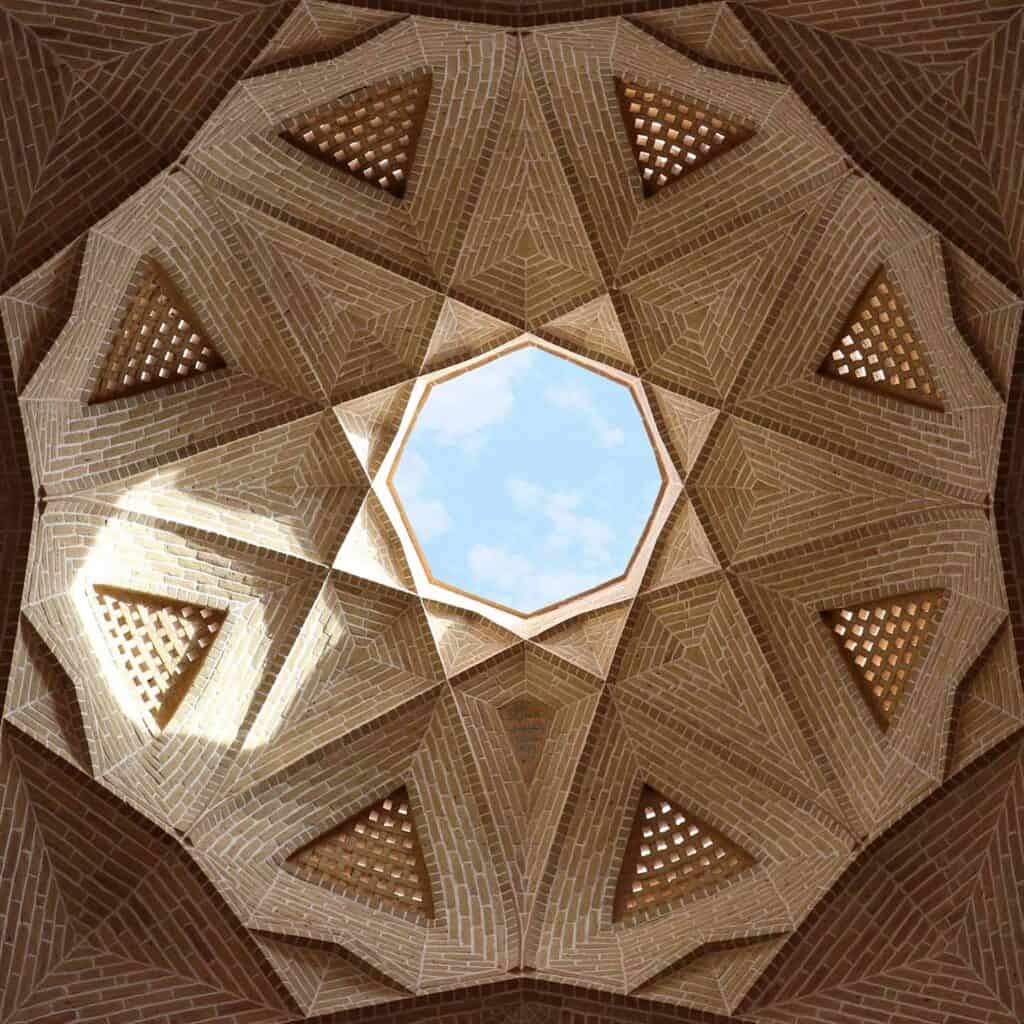

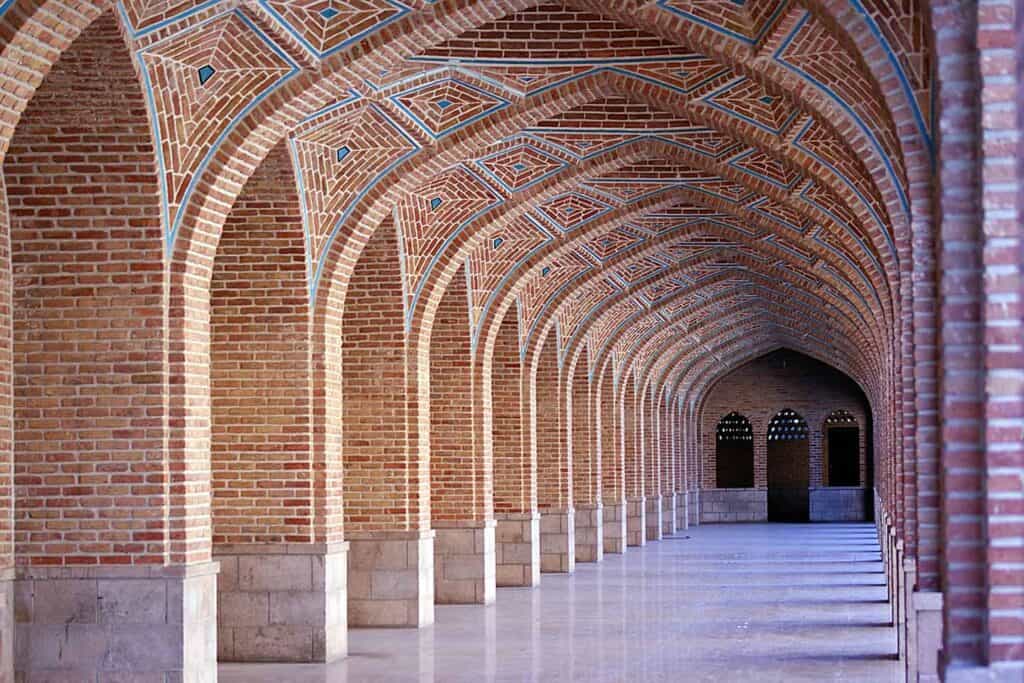

Welcome to an enchanting exploration through the history of Iranian architecture, a gripping narrative that unfolds over time and intricately weaves the threads of cultural identity and historical evolution. Beyond mere structures, Iranian architecture stands as a testament to the spirit of an ancient land, embodying the very essence of a civilization that has flourished over millennia.
As we commence this exploration, we’ll explore the varied styles and periods that have left an indelible mark on Iranian architecture. Join us in uncovering the importance of Iranian architecture, not just as a physical manifestation of artistic expressions, but as a mirror reflecting the transitions and triumphs of the Iranian people. We aim to showcase the rich history of Iranian architecture, inviting you to witness the cultural heritage and enduring legacy of this remarkable civilization.
Historical Overview
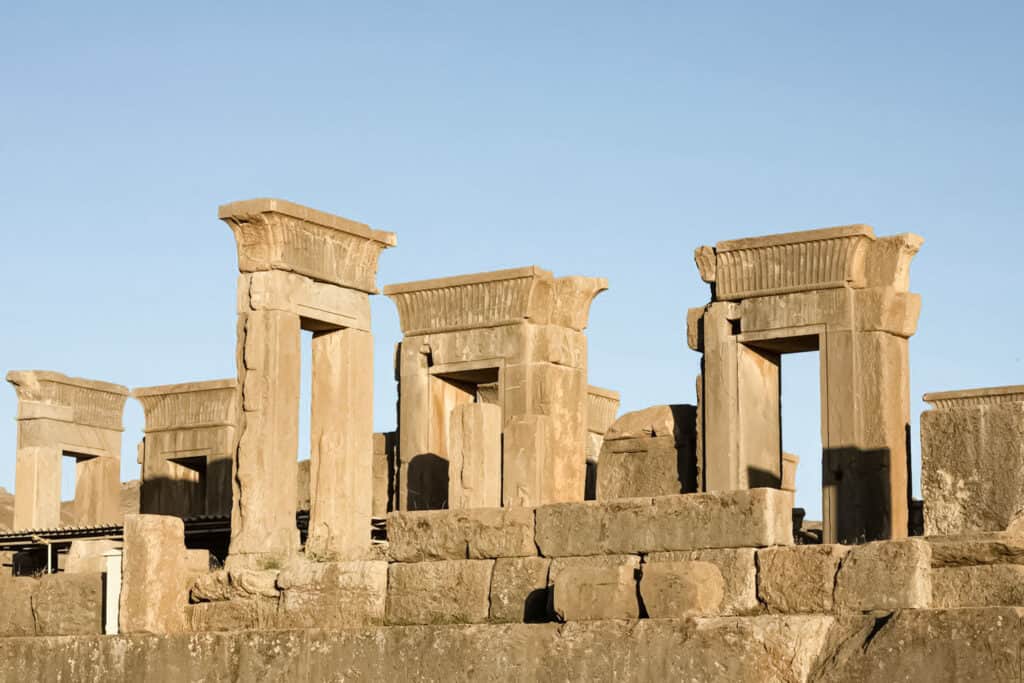
The roots of Iranian architecture dig deep into the annals of history, drawing inspiration from a collection of influences. From Elamite and Achaemenid civilizations to Islamic periods, the architectural landscape reflects a rich tapestry of varied cultural interactions.
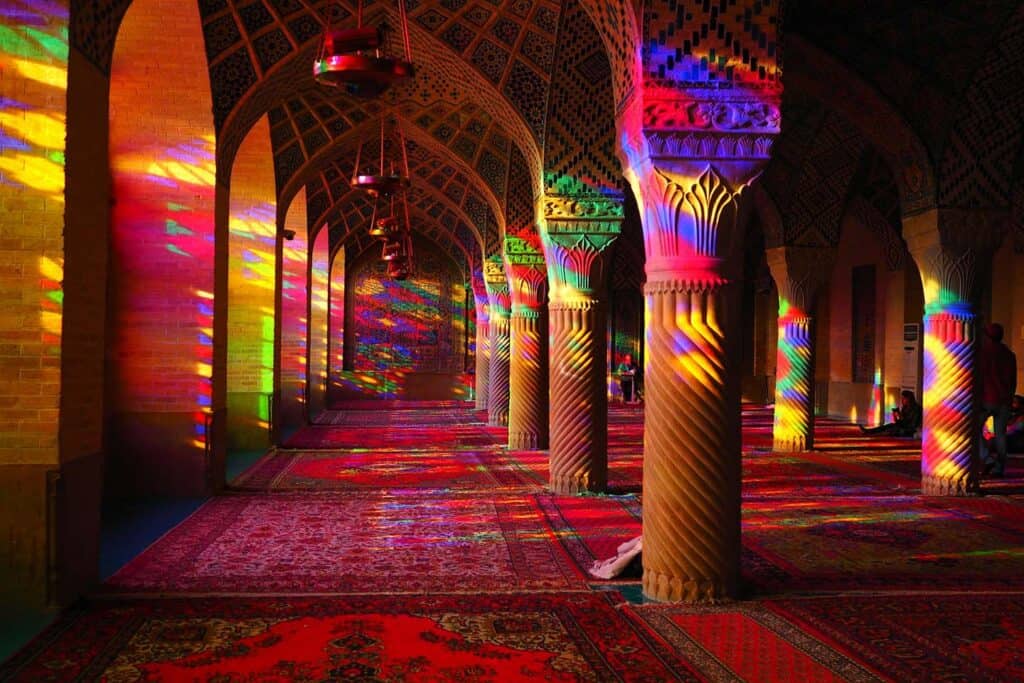
In the prehistoric period, Iran’s architectural legacy began with simple mud-brick structures, gradually evolving into more sophisticated designs with the advent of the Elamite and Achaemenid civilizations. The grandeur of Persepolis, an Achaemenid capital, stands as a testament to the advanced architectural prowess of that era. However, it was with the rise of Islam in the 7th century that Iranian architecture underwent a profound transformation.
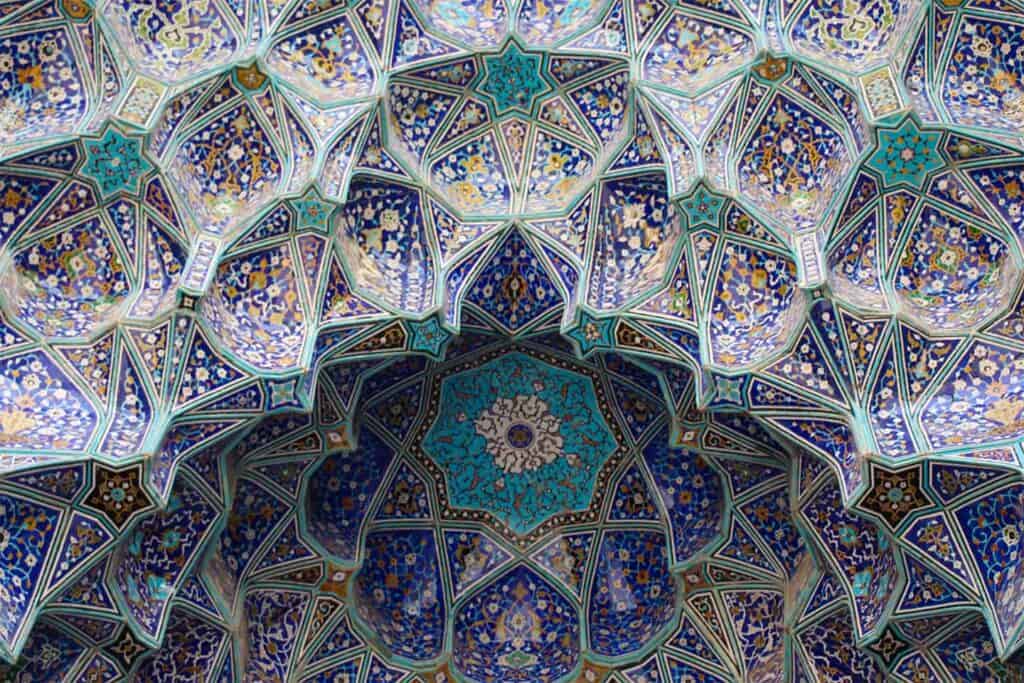
Islamic architecture, characterized by intricate geometric patterns and ornate calligraphy, produced iconic structures like the Jameh Mosque of Isfahan and the exquisite tilework of Isfahan’s Imam Mosque. This blend of pre-Islamic and Islamic influences has shaped Iranian architecture into a unique and enduring testament to the nation’s cultural richness.
1. Architectural Styles of the Iranian Plateau
1.1. Persian Style
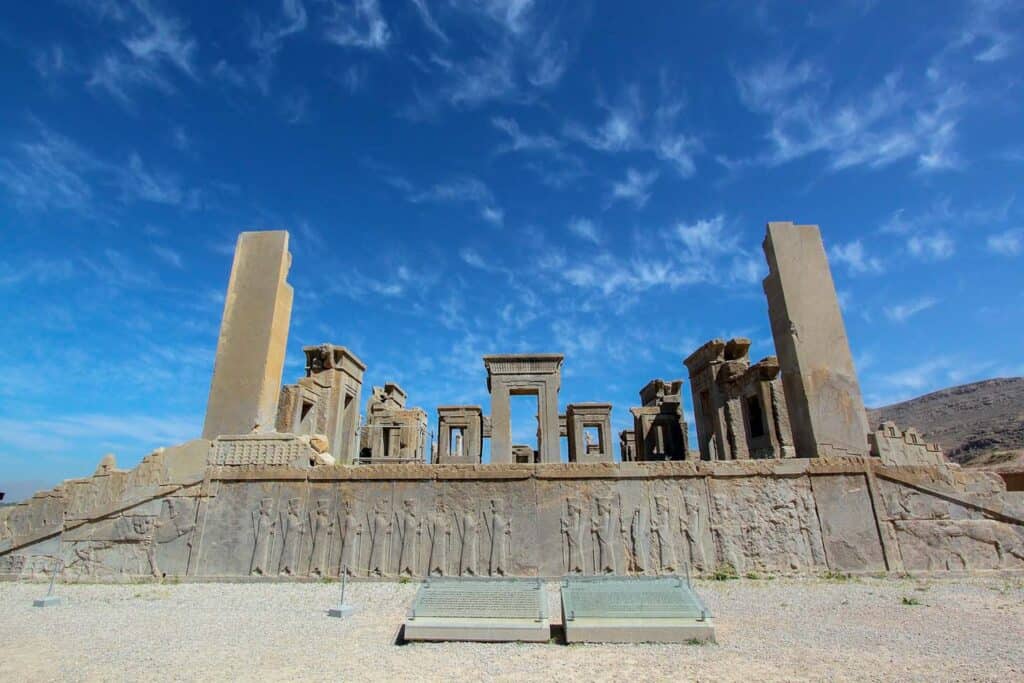
The architectural style of ancient Persia stands as the embodiment of grandeur and sophistication, encapsulating the essence of a civilization that has flourished over millennia. This unique style reached its zenith during the Achaemenid Empire, where monumental structures like Persepolis showcased the ingenuity of Persian architects.
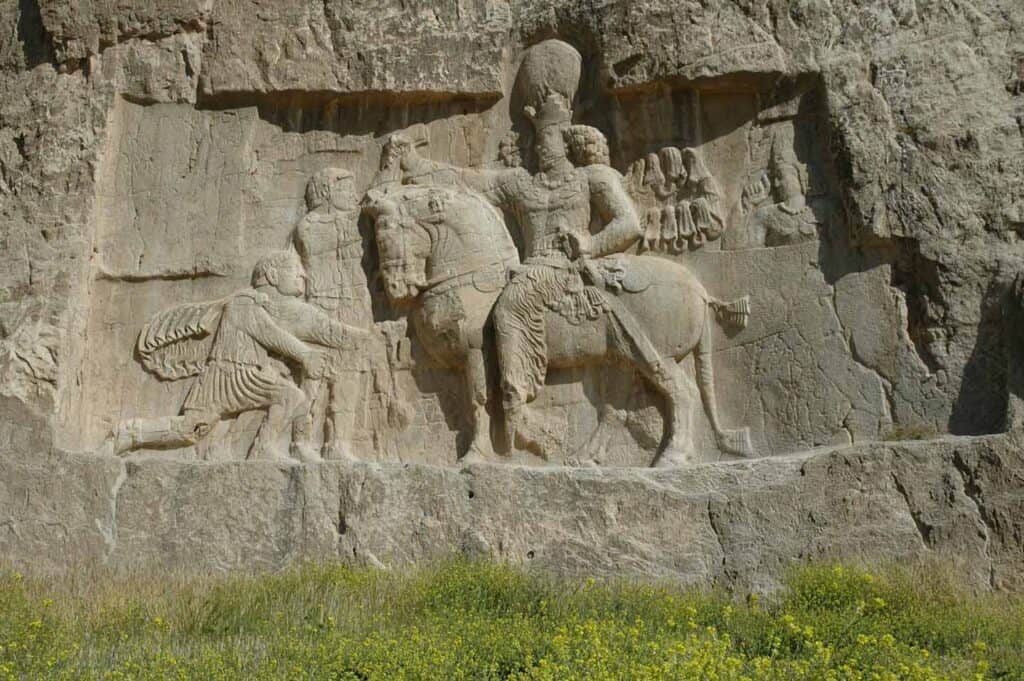
Characterized by intricate carvings, majestic columns, and elaborate motifs, Persian architecture seamlessly intertwines aesthetics with functionality, showcasing a harmonious blend of form and purpose.
The enduring legacy of Persian architecture lies not only in its physical manifestations but also in its profound influence on subsequent architectural traditions. From the intricately adorned palaces of Persepolis to the tranquil gardens of Pasargadae, the Persian architectural style stands as a powerful testament to the enduring spirit and artistic brilliance of ancient Iran, shaping the landscape of traditional architecture and defining the character of Persian buildings.
1.2. Parthian Style
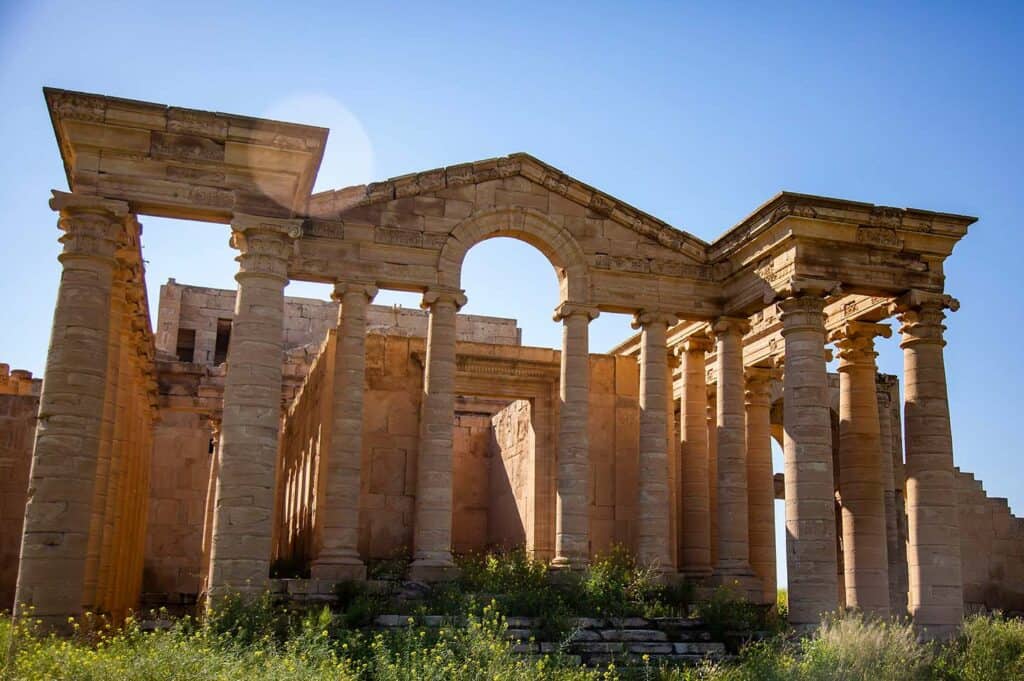
The Parthian architectural style emerged during the Parthian Empire. Thriving from the 3rd century BCE to the 3rd century CE, the Parthians left an indelible mark on the architectural panorama.
Monumental structures, such as the Anahita Temple at Kangavar, exemplify the grandiosity and innovation of Parthian architects. Also the city of Hatra, with its unique circular temple and fortified walls, stands as a testament to the engineering prowess of this period.
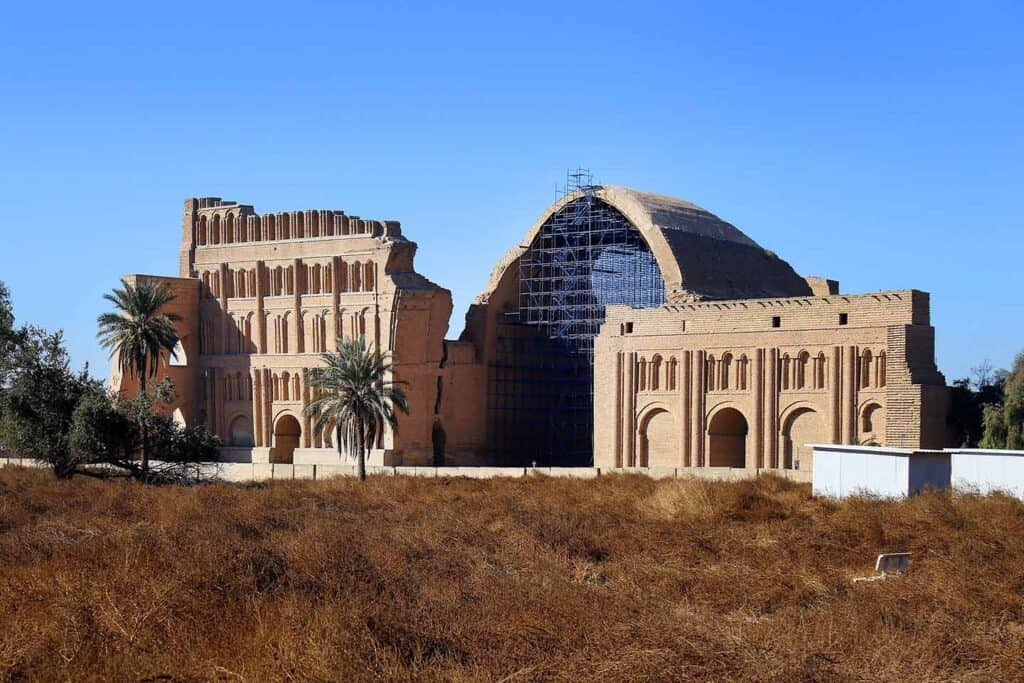

Parthian architects displayed remarkable prowess in construction techniques, utilizing massive stones and creating impressive vaulted spaces. Also, the decorated walls of these structures showcase their great attention to detail, reflecting the remarkable craftsmanship of Parthian architects.
Beyond its visual allure, the Parthian architectural style served as a cultural bridge, blending varied influences and contributing significantly to the rich history of traditional Iranian architecture.
1.3. Khorasani Style
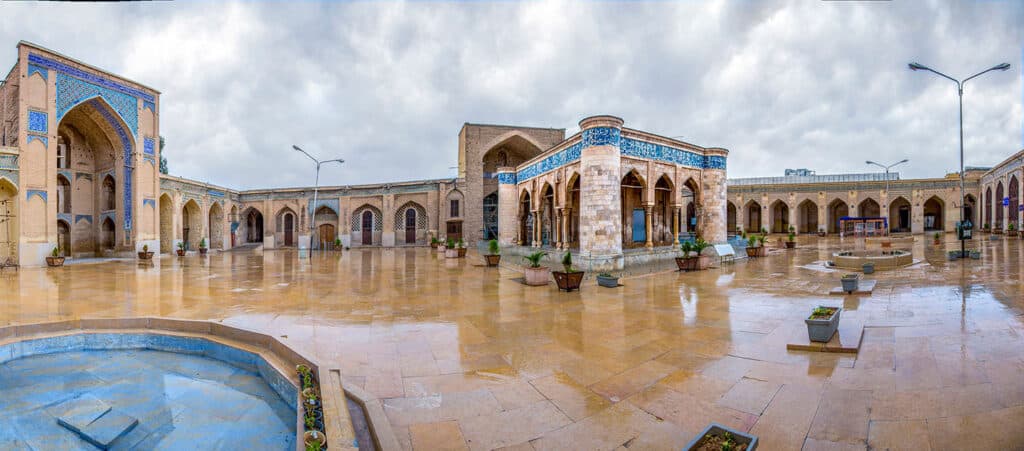
The Khorasani style is one of the most important styles of Iranian architecture in the early Islamic period. Situated in the northeastern region of Iran, the Khorasani architectural style emerged as a response to the arid landscape and the need for functional yet aesthetically pleasing structures. Notable for its simplicity, this style focused on practicality while incorporating regional influences.
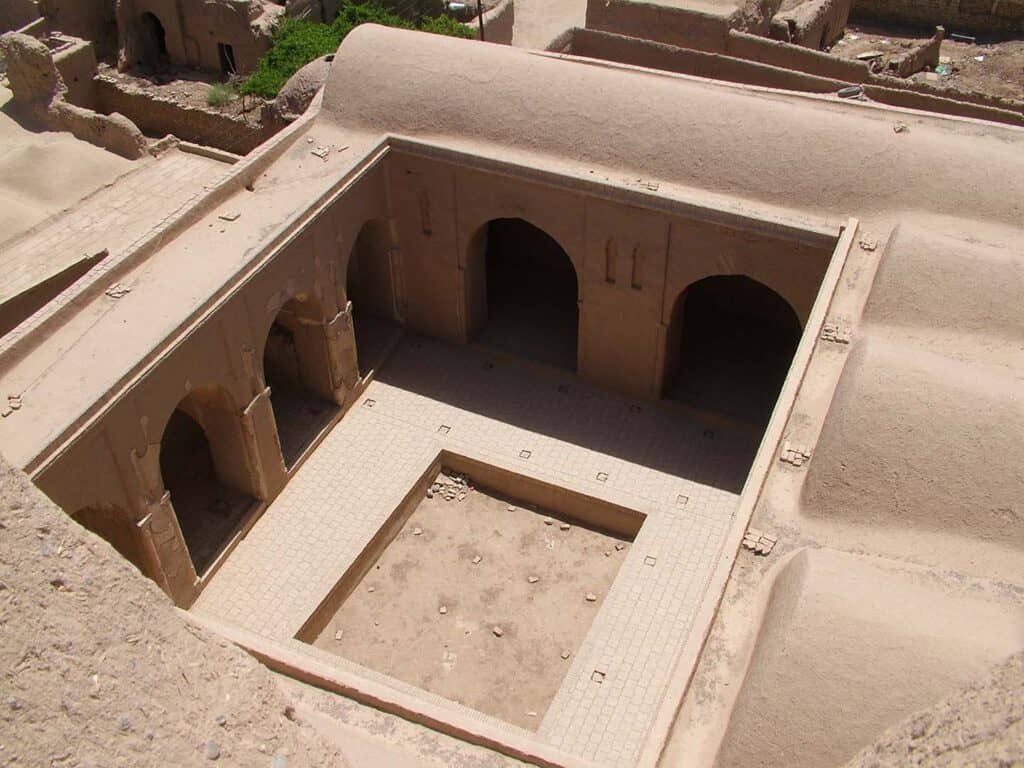
The Khorasani style is deeply rooted in the cultural and geographic context of northeastern Iran. The use of local materials, such as mud-brick and ceramic tiles, reflects a harmonious integration with the surrounding environment, showcasing the adaptability of Iranian architecture.
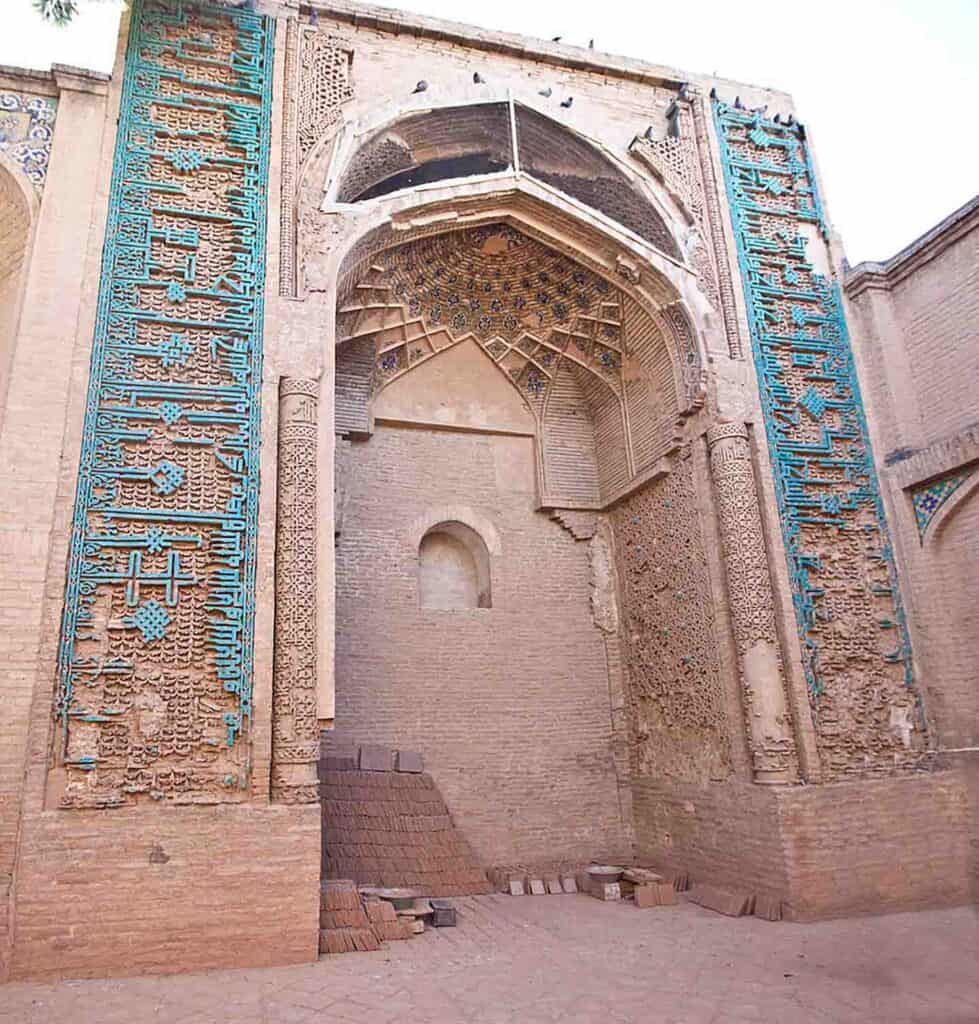
The Great Mosque of Herat, a masterpiece of Khorasani architecture, exemplifies the style’s emphasis on geometric patterns and functional design. The mosque’s courtyard and minarets showcase a meticulous blend of form and function, echoing the regional identity of Khorasan.
1.4. Razi Style
The Razi architectural style, flourishing during the Seljuk period, is characterized by its intricate geometric patterns and ornate details. This style reached its zenith in the 12th century, leaving an indelible mark on the architectural landscape of western Iran.
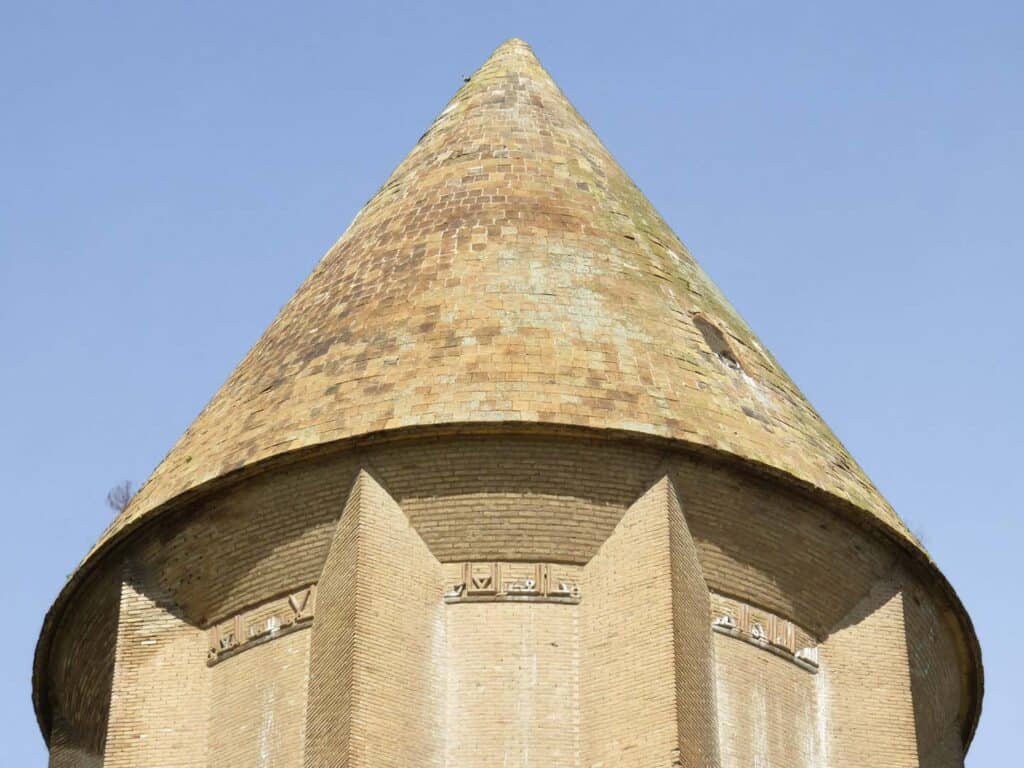

The Razi style emerged during a period of intellectual and artistic flourishing in Iran. Scholars like Khayyam and Avicenna influenced not only scientific thought but also architectural design, contributing to the synthesis of knowledge and aesthetics.
The use of ornate tilework, delicate calligraphy, and elegant domes characterizes Razi’s architectural creations, offering a visual feast that transcends mere construction.
1.5. Azari Style
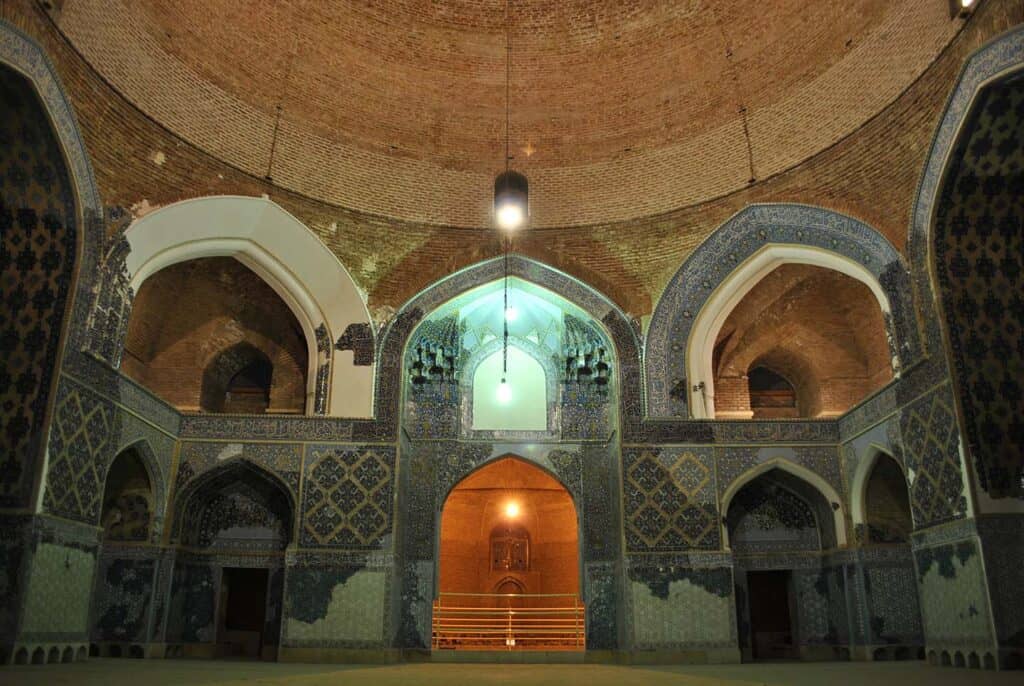
The Azari architectural style brought forth a fusion of Persian, Mongol, and Central Asian influences. This style, which flourished during the Ilkhanid period, is known for its complex tiling and geometric motifs and has left an indelible mark on Iran’s architectural landscape.
The Azari style, with its cross-cultural influences, signified a period of artistic synthesis. The exchange of ideas and techniques between Persian, Central Asian, and Mongol artisans contributed to the evolution of architectural aesthetics during the Ilkhanid era.
From the Blue Mosque in Tabriz to the Jameh Mosque of Yazd, the Azari style manifested in various regions, showcasing its adaptability to varied environments. The intricate tilework, often depicting floral motifs and calligraphy, became a hallmark feature of Azari architecture.
1.6. Esfahani Style
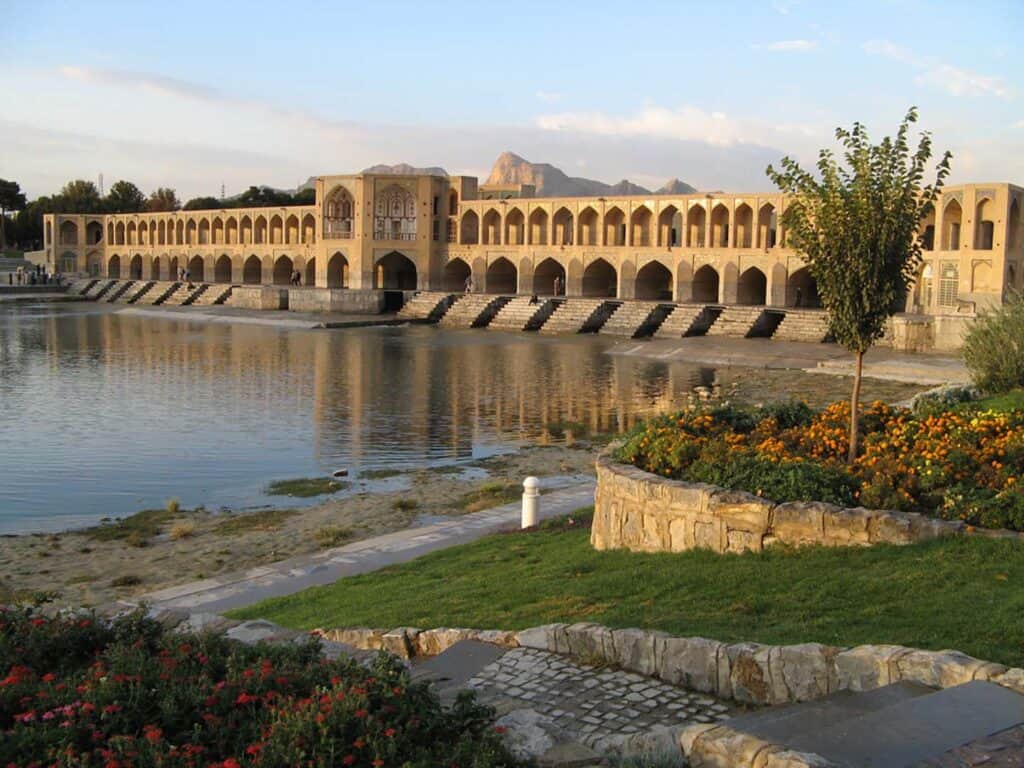
Flourishing during the Safavid era, the Esfahani style reached its zenith in the 17th century, and is characterized by its meticulous attention to symmetry, harmonious proportions, and ornate embellishments. Esfahan, the capital city, became a focal point for the development of this style, leaving an enduring legacy.
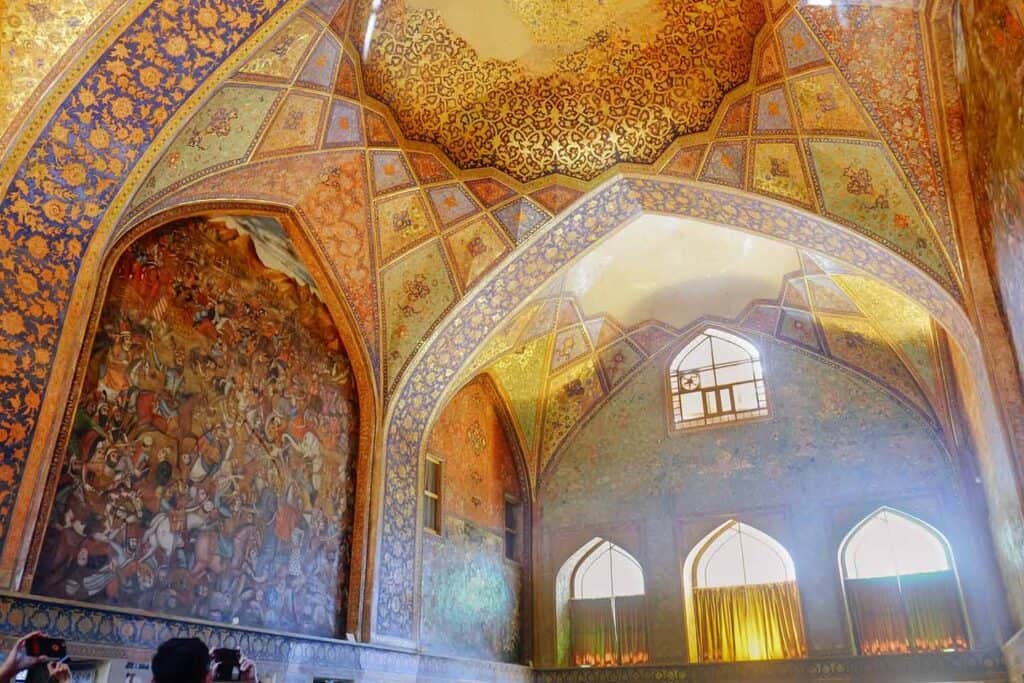
The Esfahani style seamlessly integrated with the broader Persian architectural tradition. Drawing inspiration from ancient Persian motifs and techniques, it revitalized and redefined the visual language of Iranian architecture during the Safavid era. The use of vivid colors, geometric patterns, and majestic domes epitomizes the distinctive features of Esfahani style.
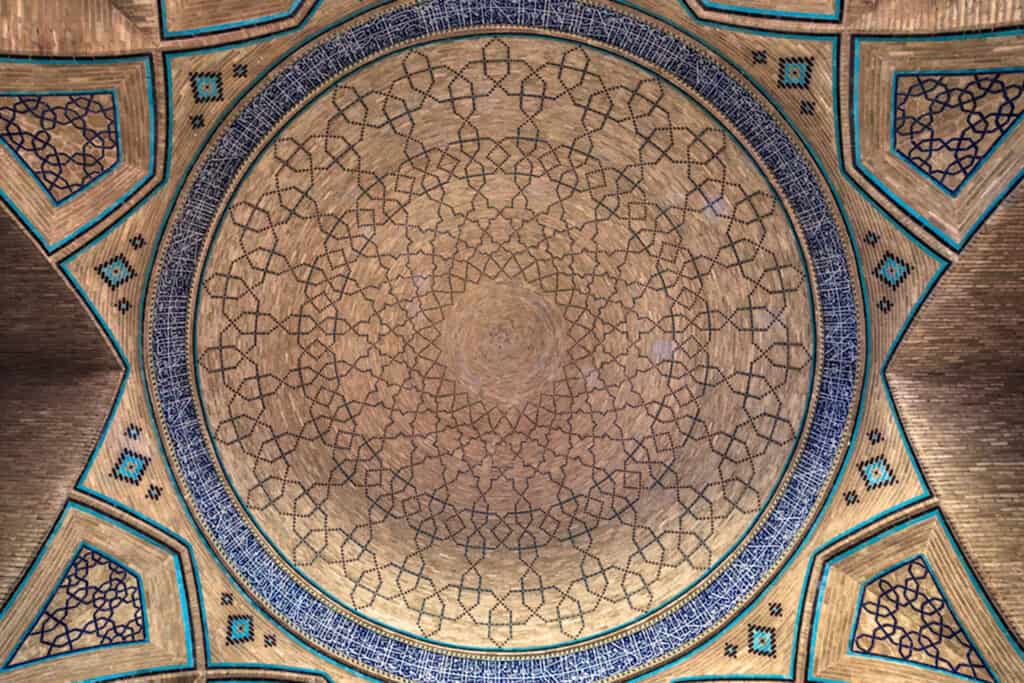
The Imam Mosque, also known as Shah Mosque, stands as a masterpiece of Esfahani architecture. The intricate tilework, soaring minarets, and expansive courtyards showcase the meticulous attention to detail and the grand scale characteristic of this style.
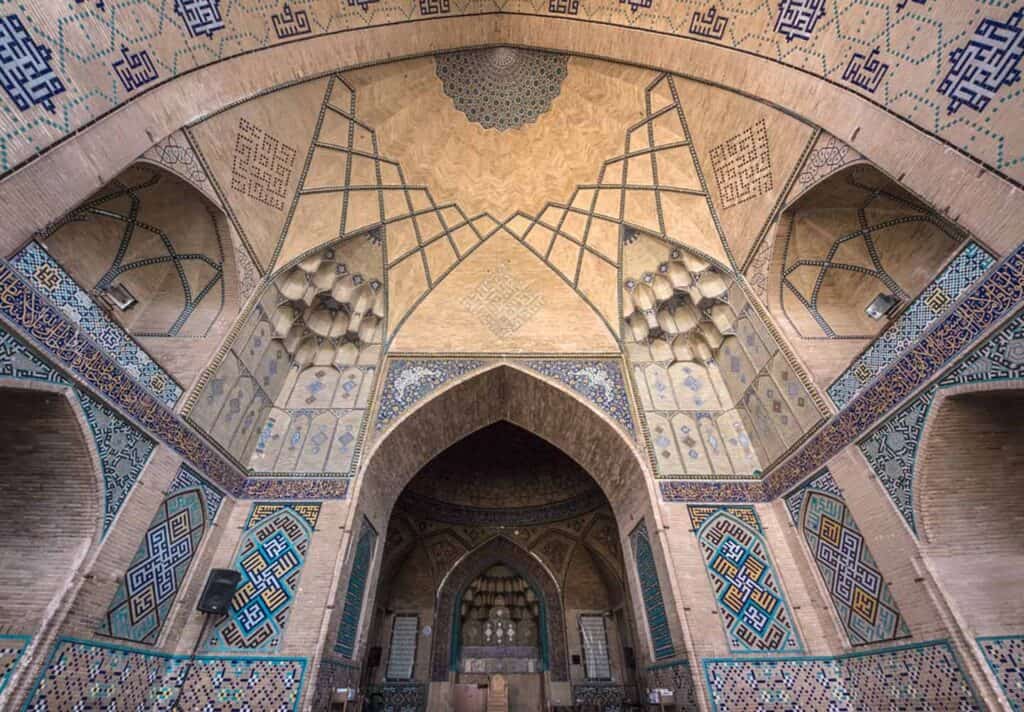
2. Historical Significance and Architectural Innovations
The historical monuments of Iran, from ancient wonders such as Chaghazanbil Temple to the grandeur of Iranian mosques, are very important as a living testimony of different periods of architecture. The Choghazanbil Temple, dating back to ancient times, represents the rich cultural heritage of Ancient Iran, showcasing early architectural ingenuity.

Transitioning through the ages, the evolution of Persian architecture becomes evident, culminating in the mesmerizing structures of the Early Islamic period. Particularly noteworthy is the Imam Mosque, a quintessential example of mosque architecture that seamlessly fuses Persian and Islamic influences.
These historical monuments are not merely structures; they are eloquent narrators of the nation’s history, embodying the continuum of architectural innovation from Ancient Iran to the glory of Persian and Islamic architecture.
3. Revisiting the Historical Wonders of Iranian Architecture
Naqsh Jahan Square (Isfahan)

Naqsh-e Jahan Square, a UNESCO World Heritage Site in the heart of Isfahan, Iran, stands as a majestic testament to Safavid architecture and the grandeur of Islamic art. Also known as Imam Square, it is one of the largest city squares globally and a jewel of Safavid architecture.
The Imam Mosque, with its awe-inspiring blue-tiled domes, stands on the south side, while the Ali Qapu Palace graces the western end, offering panoramic views of the square. The northern side is flanked by the Qeysarieh Portal, leading to the bustling Grand Bazaar. Completing this architectural symphony is the Sheikh Lotfollah Mosque on the eastern side, a marvel of intricate tilework and intimate design.
Persepolis (Fars)
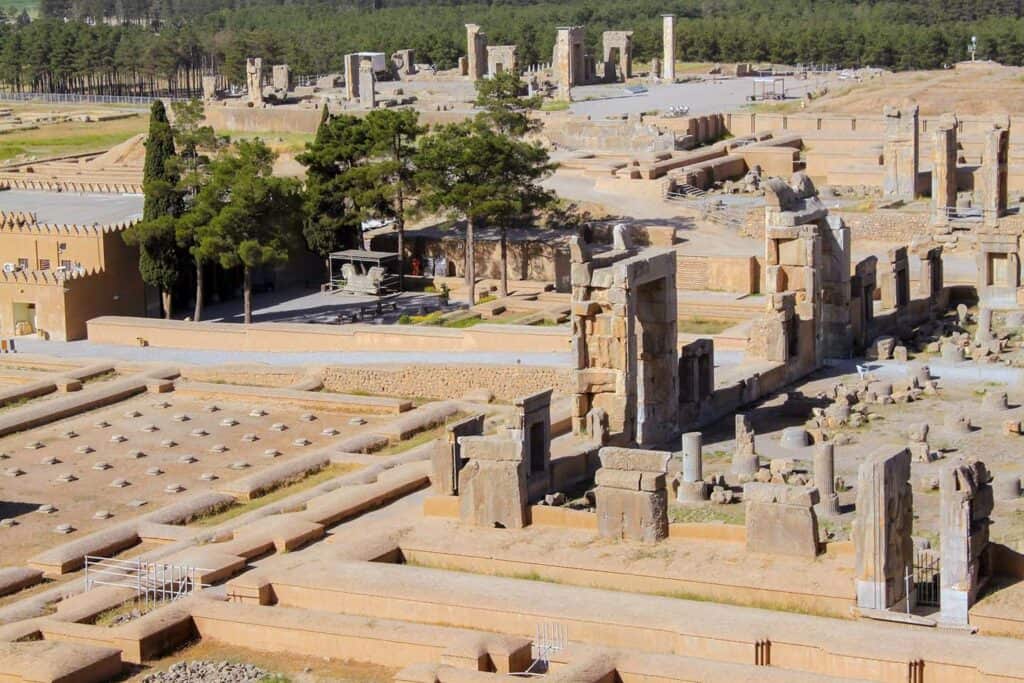
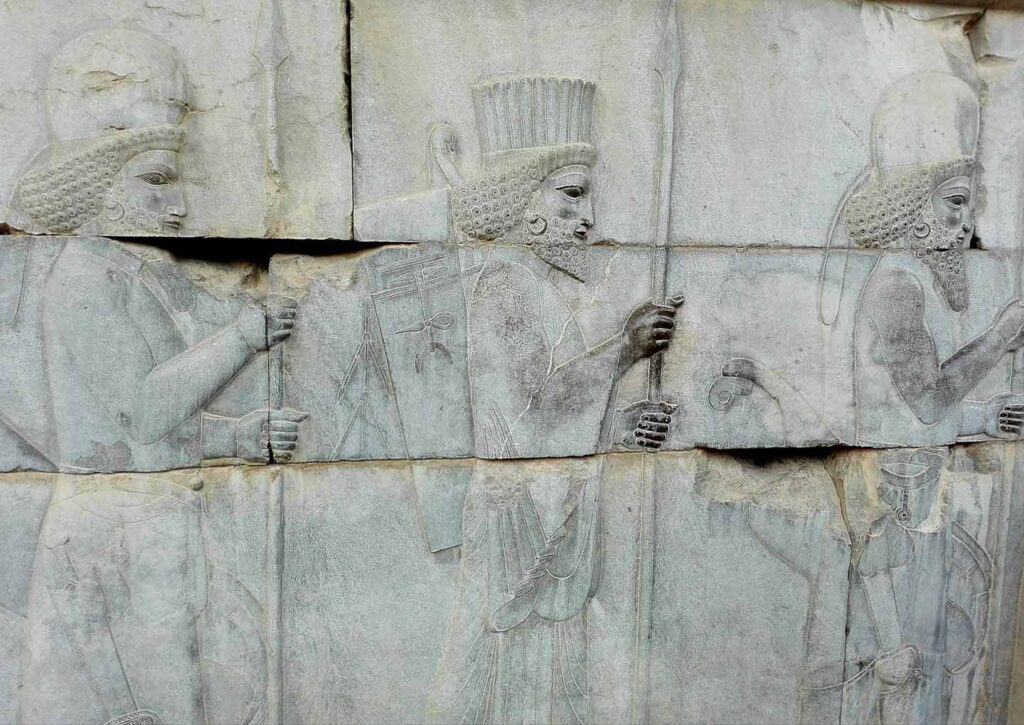
Persepolis, the ancient capital of the Achaemenid Empire, stands as an awe-inspiring testament to the grandeur of ancient Persian civilization. Located near Shiraz in Iran, this historical monument dates back to the 6th century BCE and was built by Darius the Great.
The site’s monumental structures, including the Gate of All Nations, the Apadana Palace, and the iconic Throne Hall, exhibit exquisite craftsmanship and intricate carvings that narrate tales of imperial power and cultural sophistication.
Arg-e Bam (Kerman)
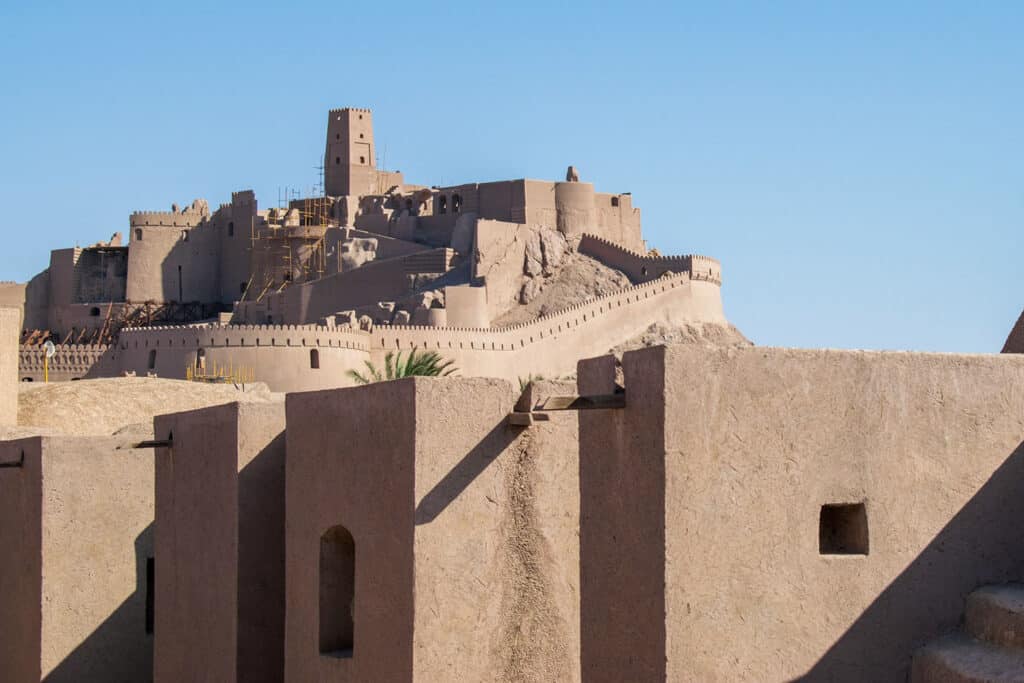
Bam Citadel, located in the desert city of Bam, Iran, is a UNESCO World Heritage Site renowned for its historical significance and architectural marvel. The citadel, dating back over a thousand years, stands as the world’s largest adobe structure and a testament to the ingenuity of ancient Iranian builders. The fortress served as a vital center for trade and culture along the Silk Road, boasting intricate structures, towers, and walls constructed entirely from mud bricks.
Golestan Palace (Tehran)
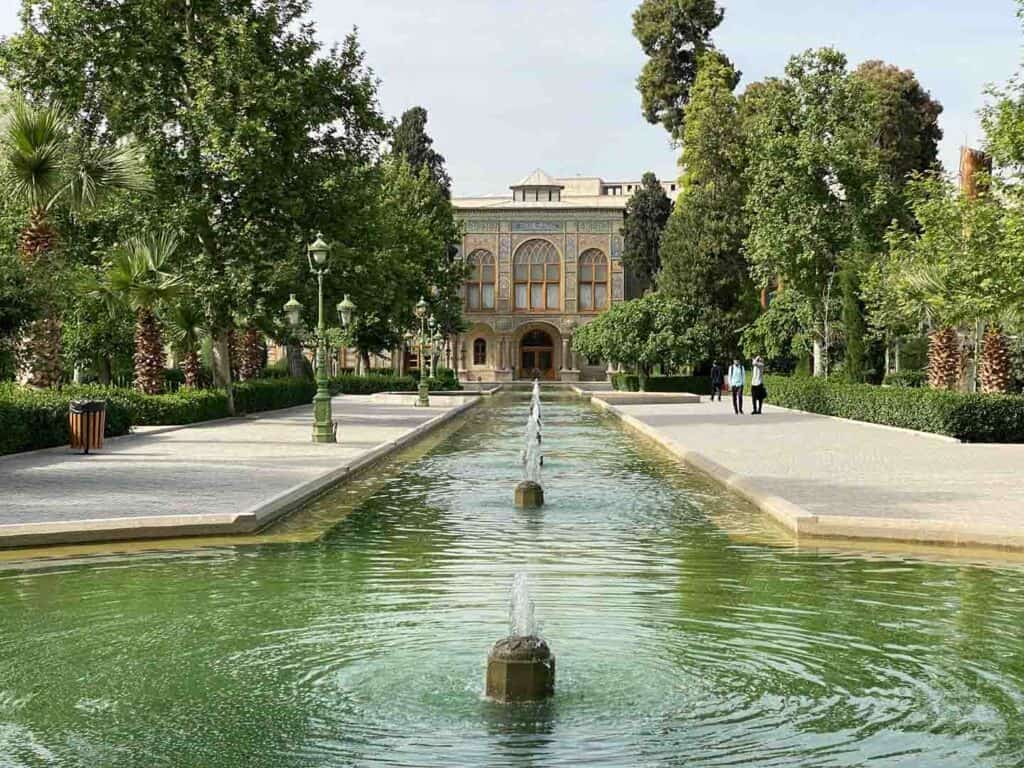

Golestan Palace, located in Tehran, Iran, is a masterpiece of Persian architecture and a UNESCO World Heritage Site. Built during the Safavid era, the palace complex showcases a harmonious blend of traditional Iranian, European, and Russian influences. The centerpiece of Golestan Palace is the Takht-e Marmar (Marble Throne), an iconic structure adorned with exquisite mirrorwork and delicate paintings.
Blue Mosque (Tabriz)

The Tabriz Blue Mosque, an exquisite masterpiece of mosque architecture, represents the pinnacle of Persian architectural design, seamlessly blending elegance with spiritual significance. Its towering minarets and majestic dome echo the grandeur of Islamic architecture. Its exterior is decorated with intricate tiling and azure blue motifs.
Bistun (Kermanshah)
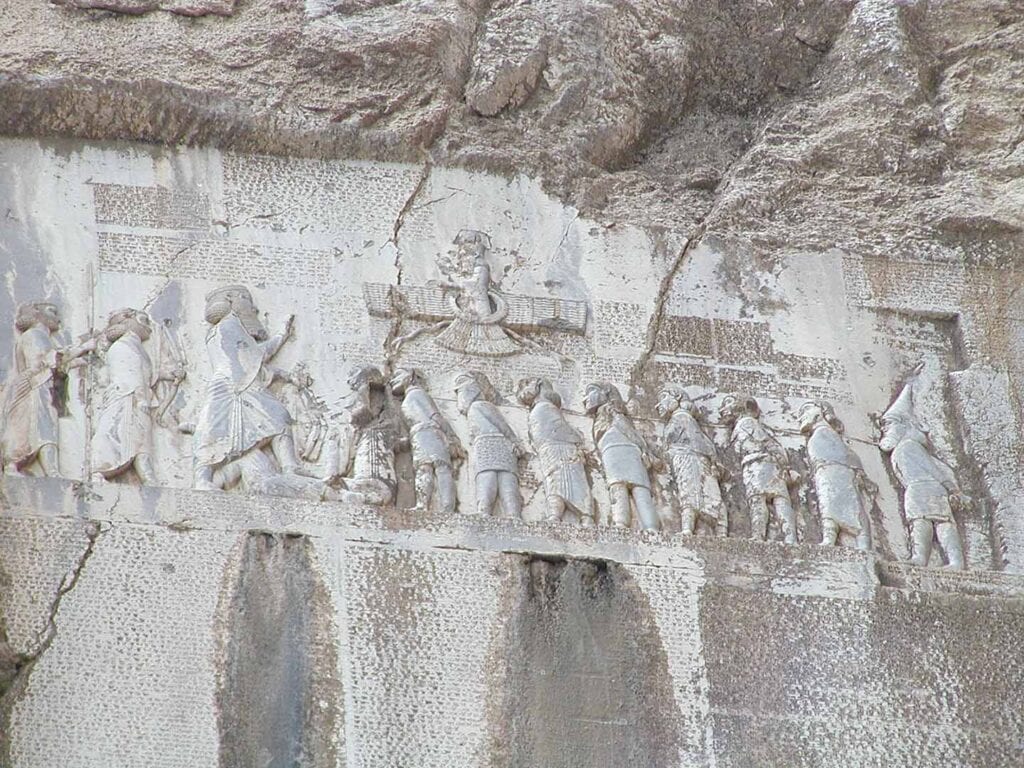
Carved into the imposing limestone cliffs, Bistun holds a unique collection of rock reliefs and inscriptions dating back to the Achaemenid period. These trilingual inscriptions, accompanied by intricate bas-reliefs, not only chronicle historical events but also showcase ancient Persia’s linguistic and artistic sophistication, turning Bistun into a window to Iran’s ancient past.
Shushtar Historical Hydraulic System (Khuzestan)
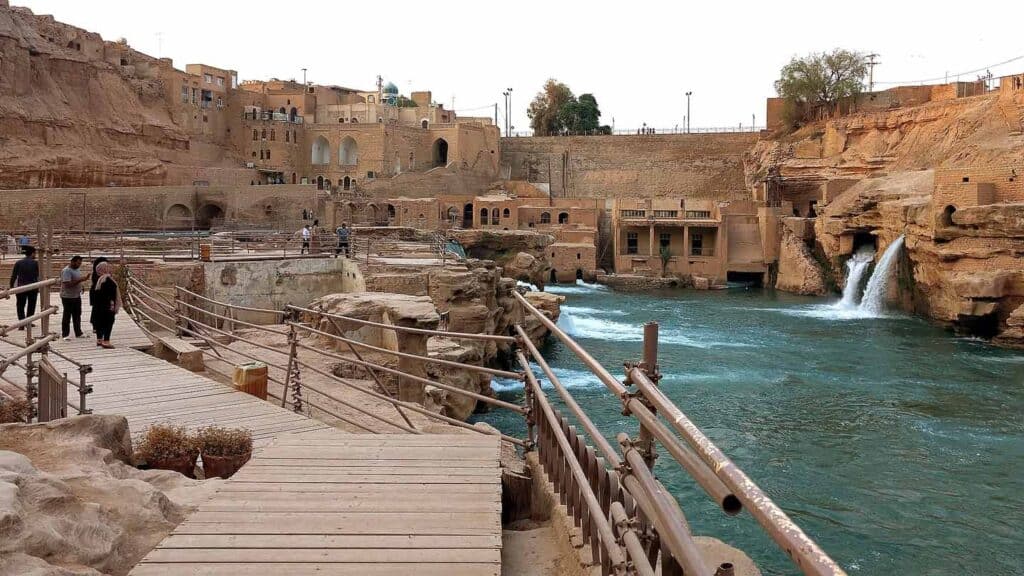
The Shushtar Historical Hydraulic System, located in the southwestern province of Khuzestan, Iran, is a marvel of ancient engineering dating back to the Sassanian era. The system comprises a network of canals, tunnels, and dams designed to control the flow of the nearby Karun River, providing irrigation for agricultural lands and powering numerous mills.
Shahr-e Sukhteh (Sistan and Baluchestan)
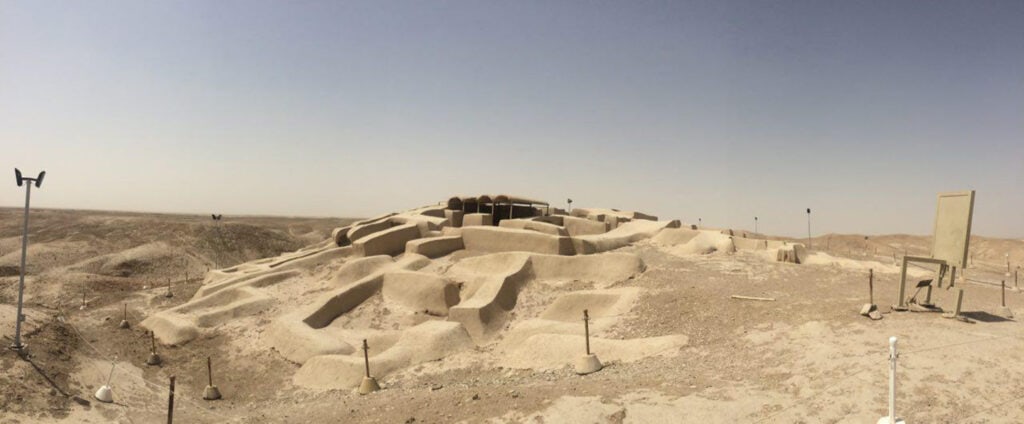
Situated in the arid landscapes of Sistan and Baluchistan, the ancient artifact of the Shahr-e Sukhteh, or Burnt City, unveils the profound historical legacy of ancient Iran.
This archaeological marvel, dating back over 5,000 years, offers a remarkable glimpse into the sophisticated urban life of the Bronze Age. Excavated from the ruins of this ancient settlement, artifacts such as intricately crafted pottery, jewelry, and tools provide invaluable insights into the cultural, economic, and technological aspects of the time.
Sultan Amir Ahmad Bathhouse (Kashan)
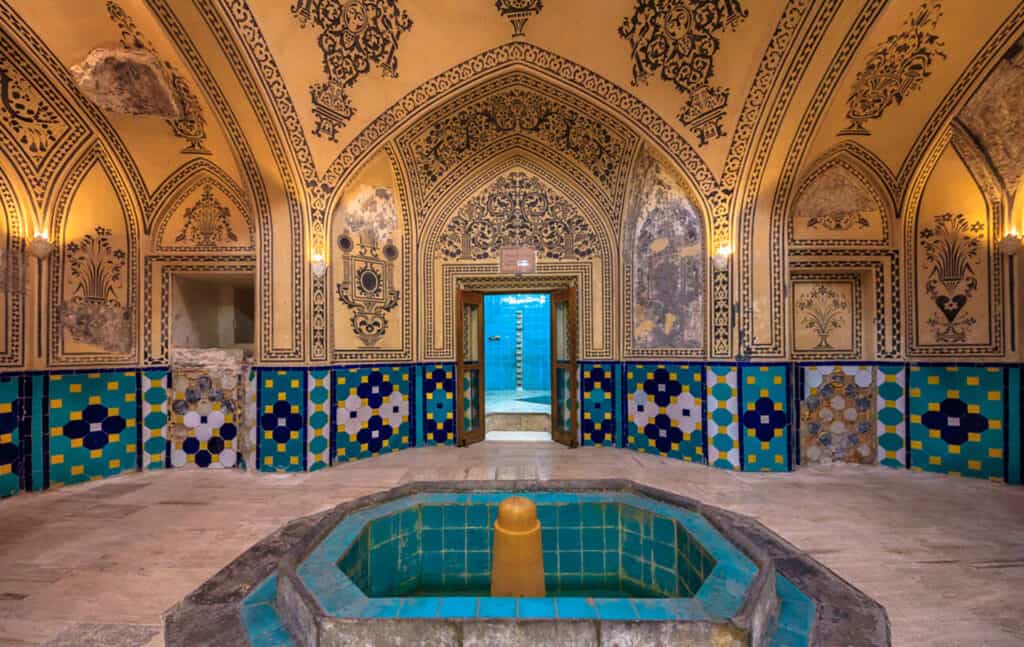
The Sultan Amir Ahmad Bathhouse, located in Kashan, Iran, epitomizes the grandeur of Persian architecture. Adorned with stunning tilework, vaulted ceilings, and ornate domes, the bathhouse reflects the mastery of Iranian artisans in blending aesthetics with practicality.
Soltanieh Dome (Zanjan)
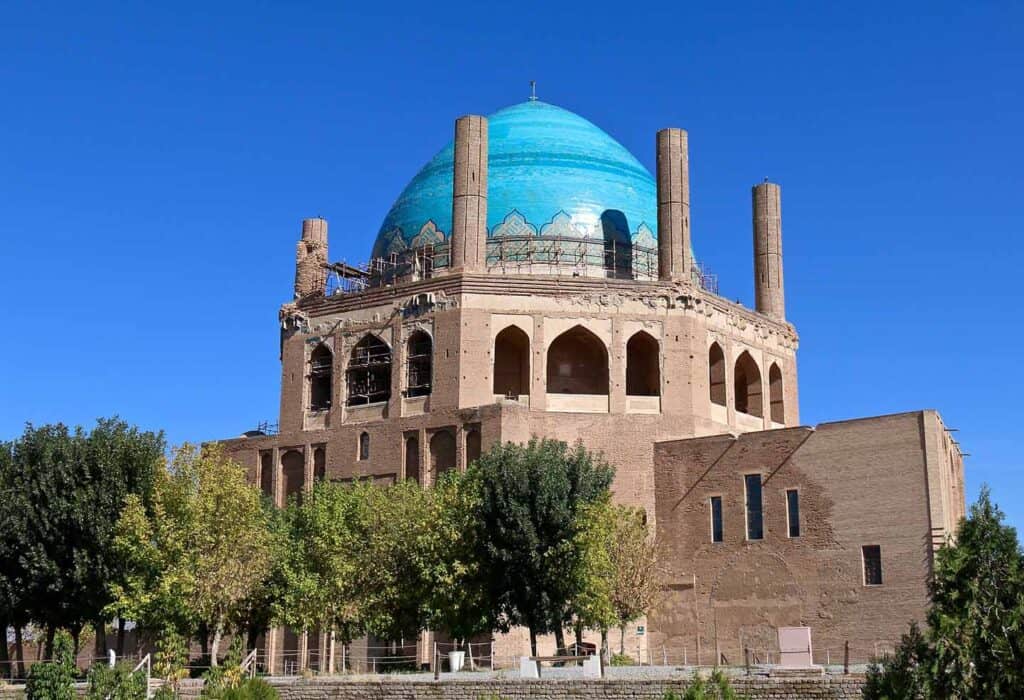
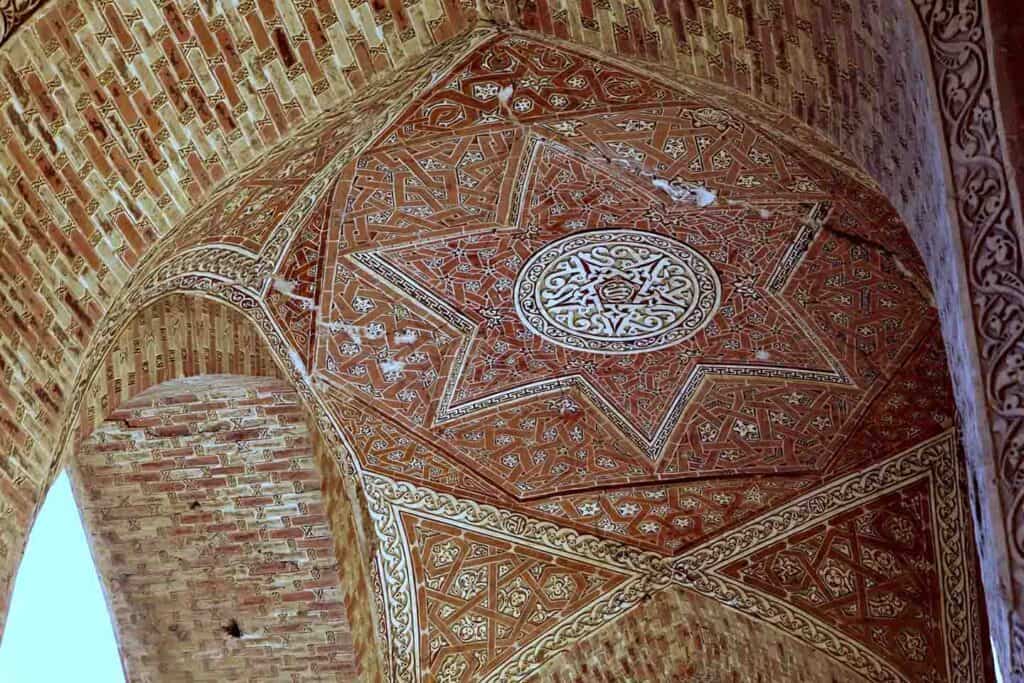
Constructed in the 14th century during the Ilkhanid period, this grand structure served as the mausoleum for Oljaytu, a Mongol ruler. The Soltanieh Dome is renowned for its innovative architectural design, characterized by a colossal dome adorned with intricate turquoise tiles and calligraphic inscriptions, showcasing the exquisite craftsmanship of the time.
Eram Garden (Shiraz)

Eram Garden, nestled at the core of Shiraz, Iran, is a sublime showcase of Persian architecture. The garden features a symmetrical layout with meticulously manicured flower beds, cypress trees, and a central pavilion adorned with intricate tilework and geometric patterns.
Eram Garden stands as a testament to the Persian art of landscaping, embodying the harmonious integration of nature and architecture, a hallmark of classical Persian garden design that has influenced landscapes and architecture throughout the region for centuries.
The Imam Reza Shrine (Mashhad)
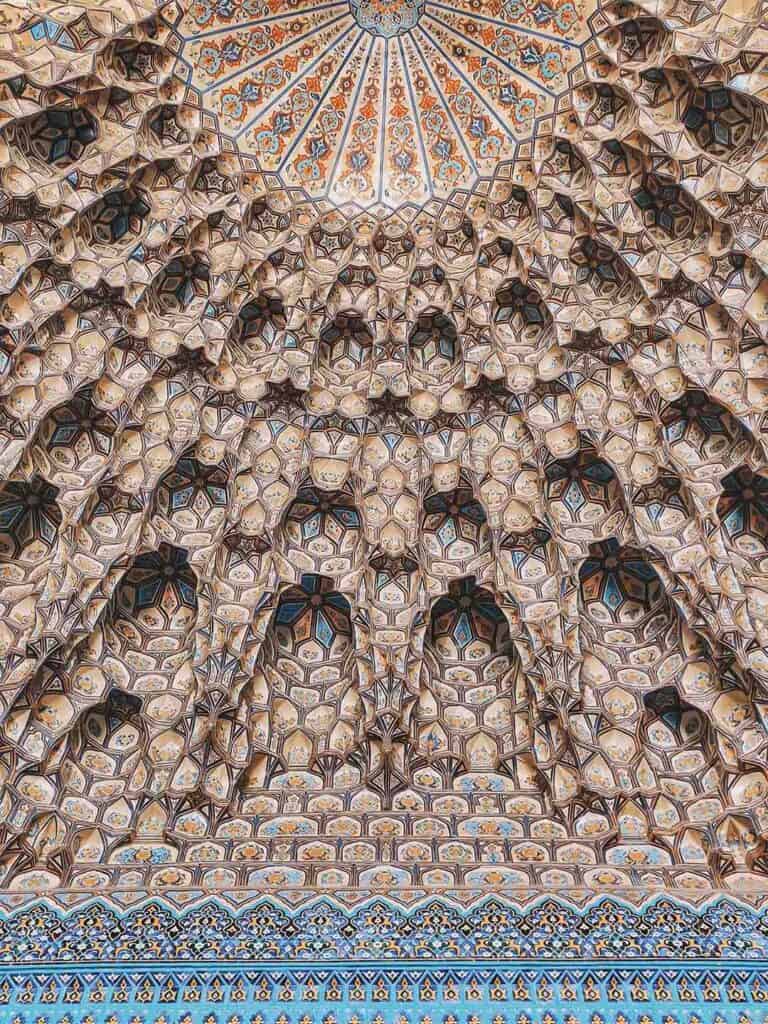
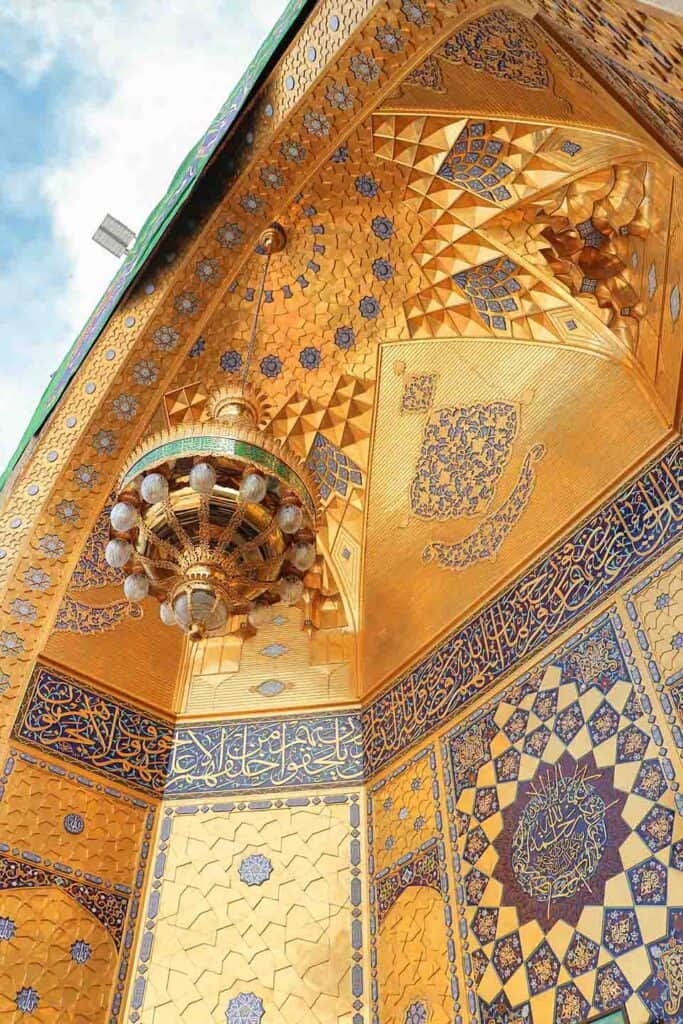
The architecture of the Imam Reza Shrine in Mashhad, Iran, is a breathtaking fusion of Islamic and Persian design, exemplifying the rich artistic heritage of the region. The grand courtyards and prayer halls showcase an elaborate blend of traditional Iranian architecture with elements of Safavid, Timurid, and Seljuk styles. The sheer scale and ornate detailing of the Imam Reza Shrine reflect not only a deep reverence for the sacred space but also an enduring commitment to architectural excellence in Islamic religious structures.
4. Contemporary Iranian Architecture
Contemporary Iranian architecture is a captivating blend of tradition and modernity, reflecting the nation’s rich cultural heritage and its dynamic present. Architects in Iran seamlessly integrate ancient design principles with cutting-edge technologies, resulting in structures that not only pay homage to the country’s historical roots but also push the boundaries of innovation.
Architects draw inspiration from Persian art, literature, and the natural landscape, infusing their creations with a sense of identity and purpose. The architecture also responds to the environmental challenges of the region, incorporating sustainable practices and energy-efficient designs. From iconic mosques to residential complexes and commercial spaces, contemporary Iranian architecture stands as a testament to the country’s ability to embrace its past while forging ahead into the future.
Azadi Tower (Tehran)
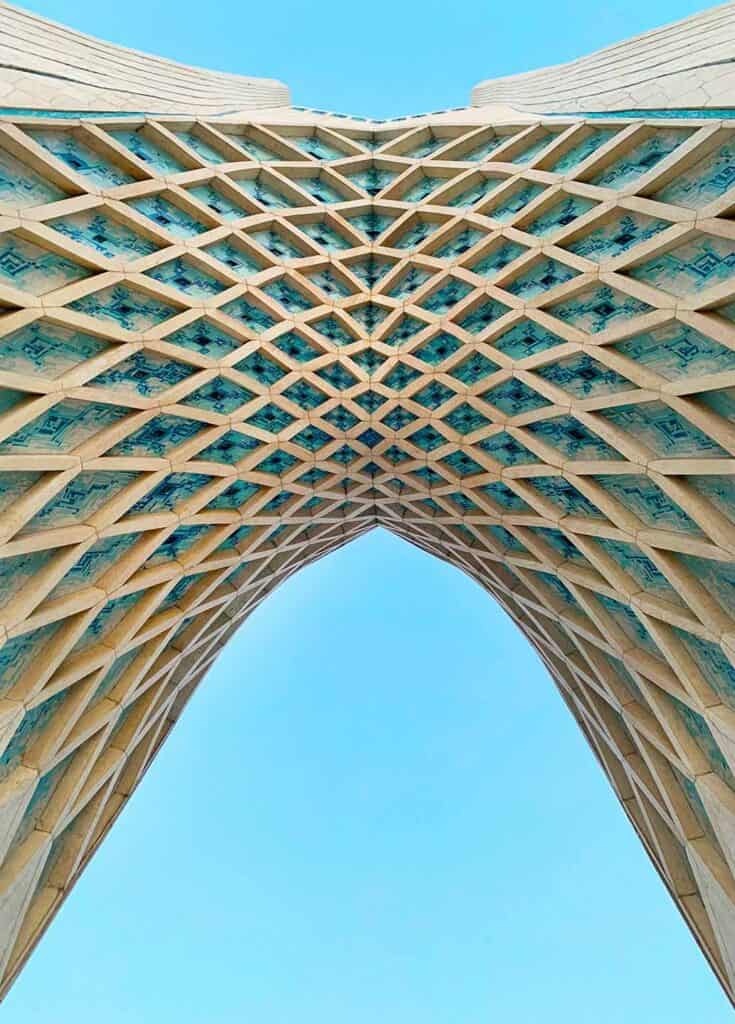
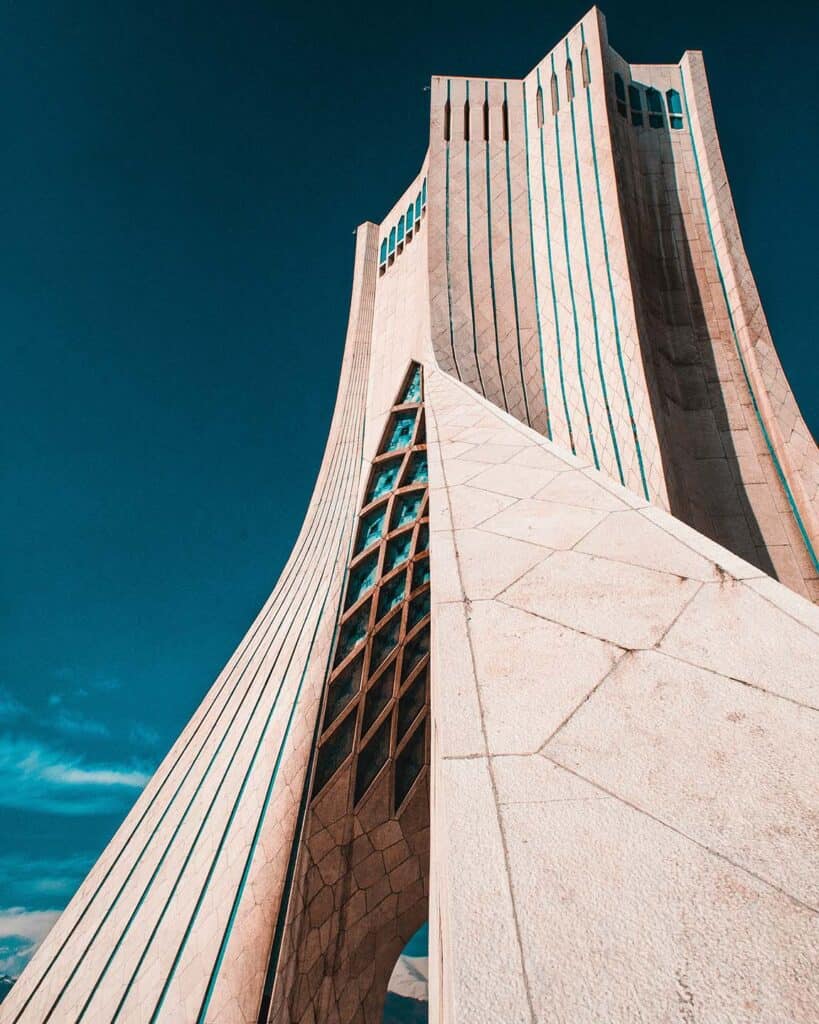
The Azadi Tower, an iconic symbol of Iranian architecture and national identity, stands proudly in Tehran, serving as a testament to the nation’s resilience and history. Completed in 1971 to commemorate the 2,500th anniversary of the Persian Empire, the tower is a masterpiece designed by architect Hossein Amanat. Its distinctive blend of modern and traditional elements reflects the rich cultural fabric of Iran.
The tower’s graceful, soaring form is adorned with intricate calligraphy and symbolic motifs, showcasing Persian craftsmanship. With a height of 45 meters, the Azadi Tower not only serves as a symbolic gateway to Tehran but also provides a captivating example of how contemporary Iranian architecture can seamlessly incorporate historical influences into a modern context, contributing to the vibrant narrative of the nation’s built environment.
Milad Tower (Tehran)

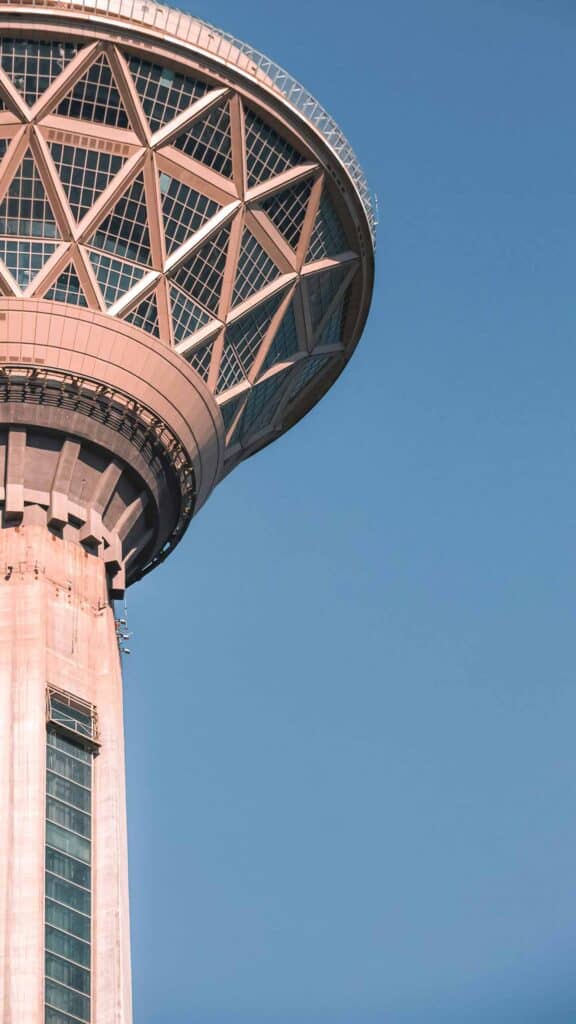
Milad Tower, stands as an iconic symbol of Tehran’s skyline and a testament to the nation’s modernity. Completed in 2007, this multifunctional structure boasts a height of 435 meters, making it the sixth-tallest tower in the world at the time of its construction.
Its design seamlessly blends elements of traditional Iranian architecture with a contemporary aesthetic, featuring intricate Islamic patterns adorning the facade and a distinctive pod-like structure at its summit. Serving as a communication and observation tower, Milad Tower also houses a revolving restaurant, an exhibition center, and commercial spaces.
White Bridge (Ahvaz)
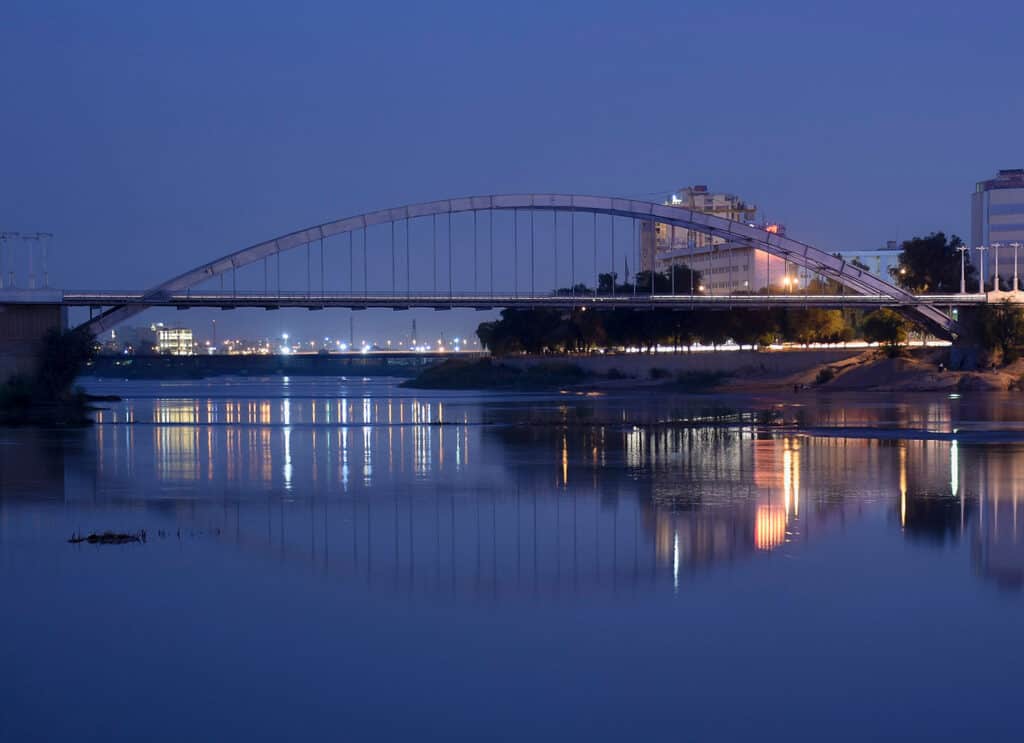
The White Bridge, a remarkable feat of Iranian architecture, stands as a testament to both engineering prowess and aesthetic beauty in the city of Ahvaz. Constructed over the Karun River, the longest river in Iran, this iconic structure showcases a blend of traditional Persian architectural elements with modern design principles.
Its gleaming white arches gracefully span the river, creating a stunning visual contrast against the azure waters below. The bridge not only serves as a vital transportation artery connecting different parts of the city but also serves as a beloved landmark, attracting visitors and locals alike who come to admire its grandeur and enjoy the picturesque views it offers.
Tabiat Bridge (Tehran)
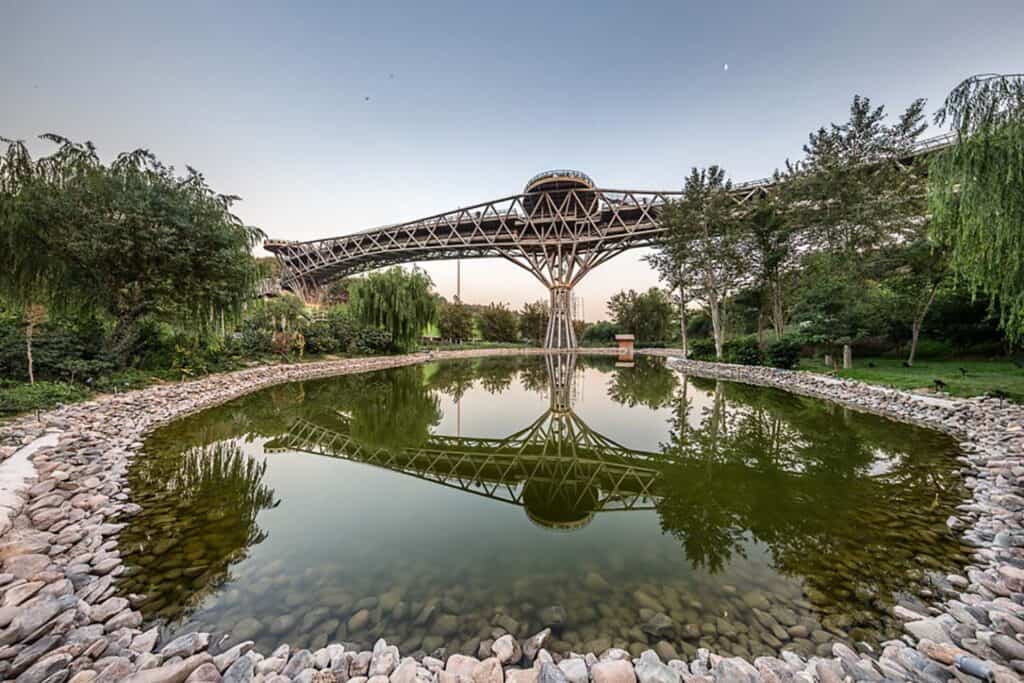
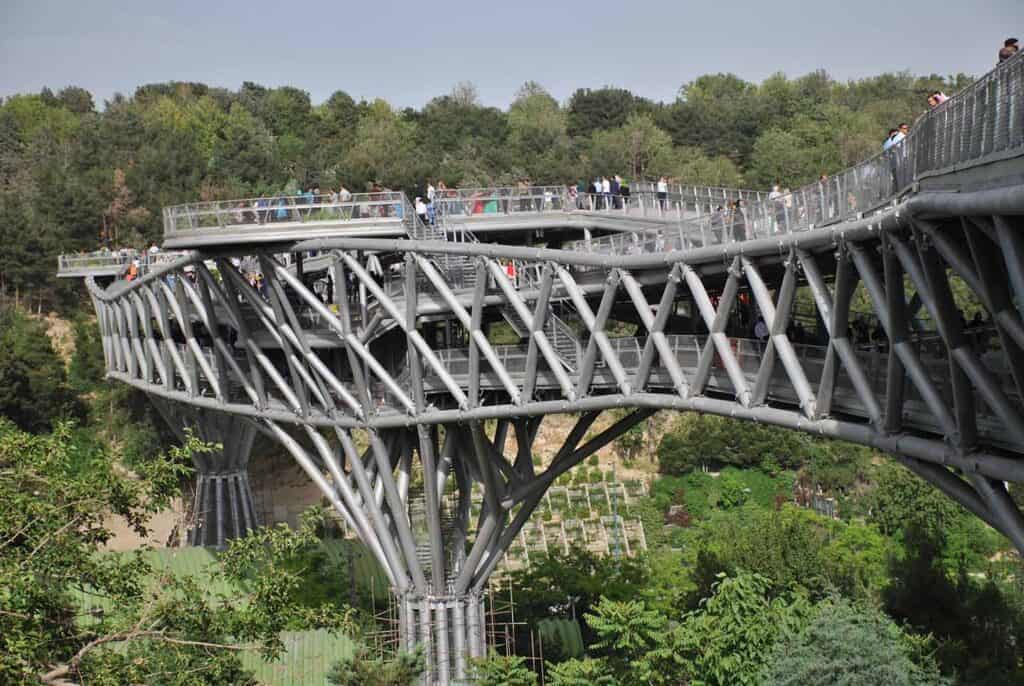
As we step into the contemporary era, Iranian architects continue to shape the skyline with groundbreaking designs. The Tabiat Bridge in Tehran, an architectural marvel resembling intertwined leaves, symbolizes the interconnectedness of nature and urban life. Designed by Leila Araghian, this bridge is a testament to the evolving narrative of Iranian architecture, seamlessly blending tradition with innovation.
Iranian Architecture: A Recap
The enduring allure of Iranian architecture lies not just in the physical manifestation of buildings but in the echoes of history, culture, and identity etched into every stone and tile. It is a living testament to the creativity and ingenuity of people who have seamlessly integrated the past with the present, forging a path towards the future.
The geometric patterns, the desert cities, and the capital metropolises – all merge into a symphony that resonates with the soul of Iran. Iranian architecture, with its myriad styles and visionary architects, invites us to unravel its layers, decipher the language of its structures, and marvel at the everlasting legacy of a civilization that continues to shape the world through its architectural prowess.










